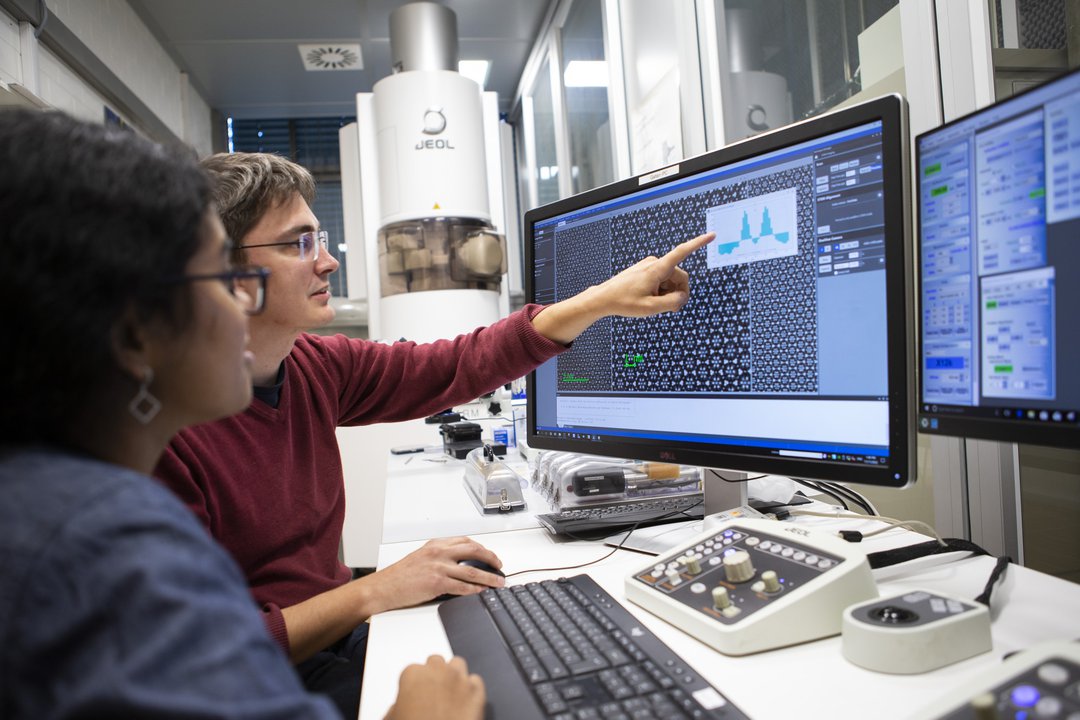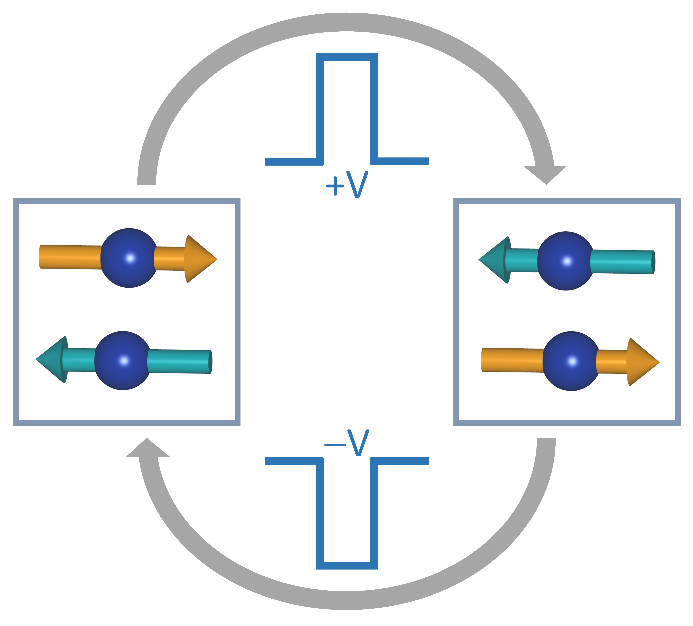Voltage Switches Antiferromagnetic States on Nanosecond Timescales
Part of the Transregional Collaborative Research Center on new quantum materials ConQuMat
Physicists at the University of Augsburg, Germany, together with collaborators from the Budapest University of Technology and Economics, Hungary, and Rutgers University, USA, have successfully switched an antiferromagnetic state in an insulator by voltage pulses, within just a few tens of billionths of a second. Their findings were recently published in Physical Review Letters. Their work is part of the Transregional Collaborative Research Center ConQuMat - Constrained Quantum Matter, funded by the German Research Foundation (DFG) with 12 million euros. The key building blocks of today’s spintronic devices are ferromagnets. In these materials, certain atoms behave like tiny magnets aligned in the same direction, producing a net magnetization. However, their strong stray fields, sensitivity to external magnetic fields, and relatively slow switching speeds limit the development of advanced, further miniaturized and fast-operation devices. In this context, antiferromagnets have been realized as a promising alternative. In these materials, the magnetic moments of neighbouring atoms point in opposite directions, compensating each other and resulting in zero overall magnetization. This makes them particularly attractive for future information-storage technologies. However, despite being discovered nearly a century ago and the intensive recent efforts that have given rise to the emerging field of antiferromagnetic spintronics, electrically controlling the magnetic state of antiferromagnets at high speeds remains a major challenge. In the present work, physicists from the University of Augsburg, Germany, along with colleagues from Budapest University of Technology and Economics, Hungary and Rutgers University, USA studied the insulating material cobalt (II, III) oxide, which has a simple textbook-like antiferromagnetic state. Due to the particular symmetry of this material, its magnetic and electric properties are strongly linked through the magnetoelectric effect – a phenomenon that enables control of magnetic properties by an electric field and electric properties by a magnetic field. Exploiting this phenomenon, the researchers electrically controlled its antiferromagnetic state, switching it with voltage pulses by reversing each atomic moment within just a few tens of billionths of a second in a large sample. This implies that in tiny device-sized structures, switching could happen even faster, in trillionths of a second. Moreover, by applying an electric field together with a rotating magnetic field, they could smoothly rotate the orientation of the atomic moments. Importantly, this unconstrained electric control of the magnetic states happens deep within the antiferromagnetic state and does not require heating and cooling cycles. These remarkable findings mark an important step toward the on-demand ultrafast electric control of magnetism. Such advances are highly desirable in antiferromagnetic spintronics and may eventually enable fast operation, more compact and energy-efficient antiferromagnet-based technologies, such as next-generation nonvolatile multiple-state memory and ultrafast logic devices. Their work is part of the Transregional Collaborative Research Center ConQuMat - Constrained Quantum Matter, funded by the German Research Foundation (DFG) with 12 million euros. This large-scale research project, led by the University of Augsburg and the Technical University of Munich, is dedicated to a central topic of the future: the development and investigation of novel materials whose properties are essentially characterized by quantum effects. In the long term, they could serve as the basis for extremely powerful computers, for example. A total of eight universities and research institutes are involved in the Transregional Collaborative Research Center, seven of which are in Germany.
Email:
istvan.kezsmarki@physik.uni-augsburgphysik.uni-augsburg.de ()
Email:
somnath.ghara@physik.uni-augsburgphysik.uni-augsburg.de ()
Email:
corina.haerning@presse.uni-augsburgpresse.uni-augsburg.de ()


Switching in trillionths of a second
About ConQuMat
Publication
S. Ghara, M. Winkler, S. W. Schmid, L. Prodan, K. Geirhos, V. Tsurkan, W. Ge, W. Wu, A. Halbritter, S. Krohns, I. Kezsmarki. Nonvolatile Electric Control of Antiferromagnetic States on Nanosecond Timescales. Physical Review Letters 135, 126704 (2025):
https://doi.org/10.1103/yzrk-h3rz
Scientific Contact
Media Contact
